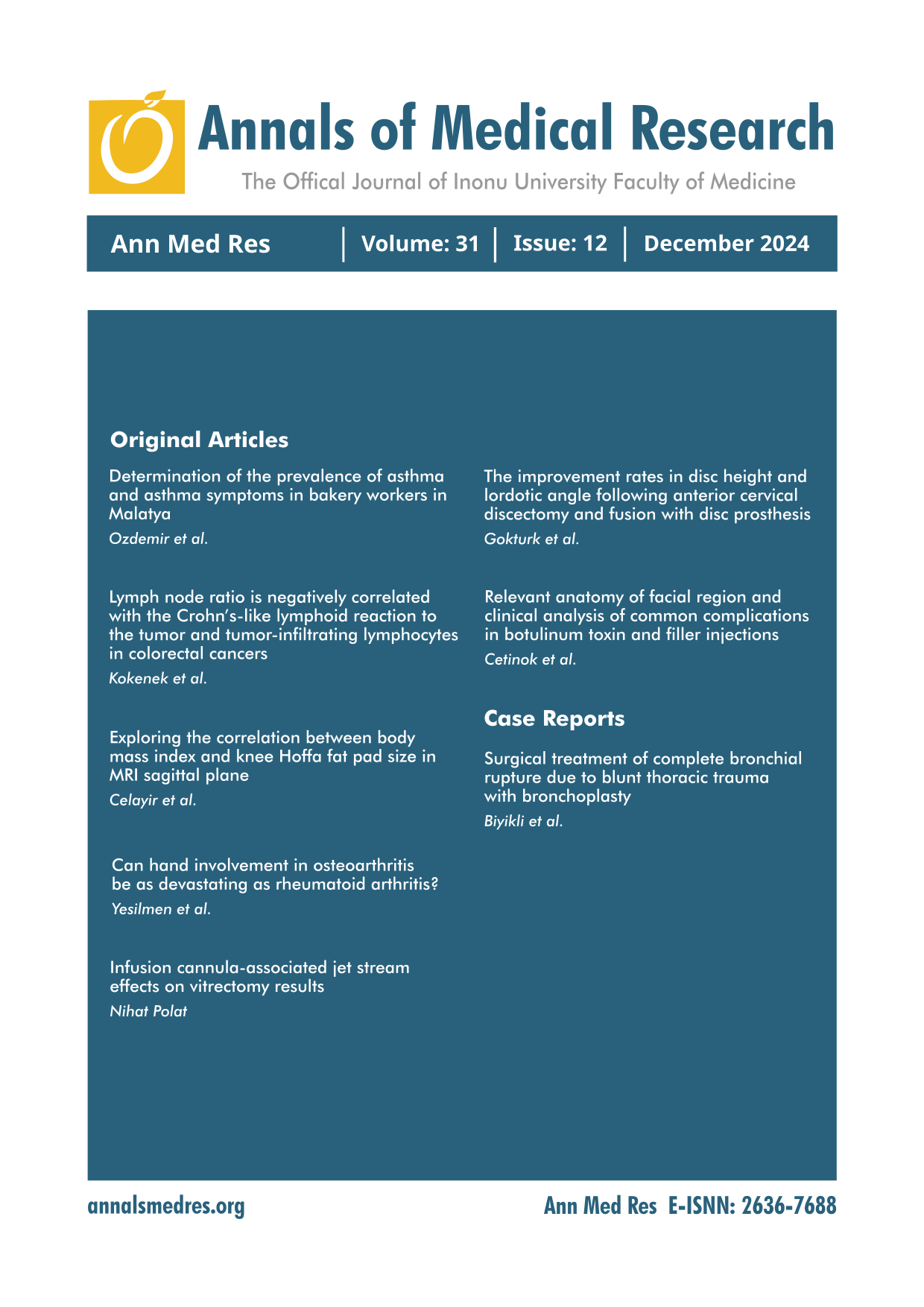Relevant anatomy of facial region and clinical analysis of common complications in botulinum toxin and filler injections
Keywords:
Botulinum toxin injections, Facial filler injections, Facial anatomy, Ptosis, Complications of botoxAbstract
Aim: This study analyzes the prevalent problems associated with Botulinum toxin and filler injections. By concentrating on the Iranian populace, we seek to elucidate the particular obstacles and adverse effects associated with these prevalent cosmetic operations. Healthcare professionals must implement preventive efforts and be equipped to address any consequences. A comprehensive understanding of anatomy is essential for achieving optimal outcomes.
Materials and Methods: This retrospective-descriptive study analyzed the medical records of female patients treated with Botox and dermal fillers at the private dental clinic between 2019 and 2024. The study focused on comparing the most common complications associated with each treatment for botulinum toxin and filler injections. Exclusion criteria included patients with pre-existing skin conditions, chronic diseases, or other significant health concerns. This study aimed to analyze the frequency and severity of problems, contextualizing data with current literature to evaluate the relative safety and efficacy of different cosmetic operations.
Results: In our study, we identified the most common complications associated with botox and filler injections. For botox, the top three issues were no correction (20.22%), redness (15.1%), over and under correction (9.5%). As for fillers, the most frequent complications include inflammation (25.9%), pain (25.9%) and erythema (22.2%).
Conclusion: This study highlights the importance of understanding facial anatomy, specifically complications in the context of botox and filler injections, emphasizing the importance of meticulous technique and a strong understanding of anatomy to minimize risks. The insights provided will assist practitioners in better complications, ultimately enhancing the safety and outcomes of cosmetic procedures.
Downloads
Published
Issue
Section
License
Copyright (c) 2024 Annals of Medical Research

This work is licensed under a Creative Commons Attribution-NonCommercial-NoDerivatives 4.0 International License.
CC Attribution-NonCommercial-NoDerivatives 4.0






